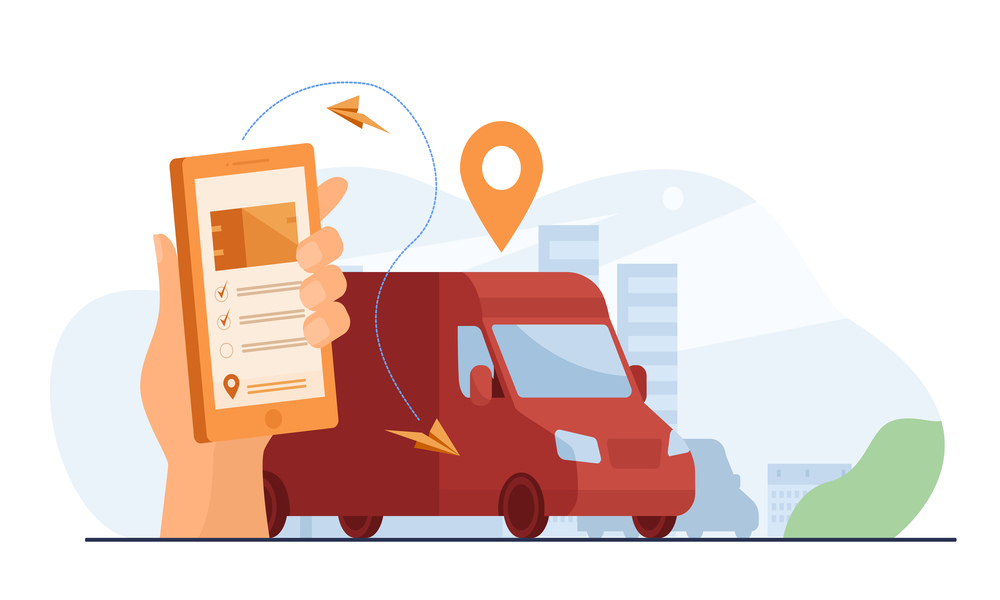
Customer using mobile app for tracking order delivery. Human hand with smartphone and courier van on street with map pointer above. Vector illustration for gps, logistics, service concept
The last mile of delivery – from the distribution hub to the customer’s doorstep – represents a major cost for e-commerce businesses. Optimizing this final leg reduces expenses while providing consumers with excellent service. Follow these strategies to enhance last-mile delivery efficiency.
Leverage data and analytics
Use data like order volumes, density mapping, and transportation time studies to make informed last-mile decisions. Identify high-density routes where consolidation sense. Analyze delivery windows and geographic clusters to optimize routes. Ongoing analysis enables efficiency improvements.
Offer delivery window selection
Allow customers to choose their preferred 1-2 hour delivery window during checkout. Accommodate customers while aggregating orders in batches for drivers along mapped-out routes. Avoid missed deliveries and repeat attempts.
Implement load optimization algorithms
Sophisticated load planning algorithms factor in manila shipping company capacity, package sizes, delivery sequence, and traffic to create optimally packed routes. It reduces the miles driven and the number of trucks needed. Continuously refine using real-time data.
Right-size delivery fleets
Analyze order data to right-size fleets for demand – vans for residential, larger trucks for bulk commercial orders. Using appropriately sized vehicles increases load efficiency. Add temporary vehicles for seasonal peaks.
Pilot New Delivery Options
Test emerging last-mile innovations like parcel lockers in key locations where consumers retrieve packages. Crowd sourced deliveries and autonomous vehicles may someday complement traditional routes.
Refine delivery speed options
Balance the desire for fast fulfillment with logistics costs. For a small upcharge, offer same-day or next-day delivery on key SKUs to capture impatient customers willing to pay more. Maintain 2-day delivery as the norm.
Streamline returns process
Optimized reverse logistics reduces unnecessary extra miles. Provide pre-paid return labels in orders and offer collection points for customer drop-offs. Batch returns for efficient loop routes.
Incentivize off-peak deliveries
Offer discounted shipping rates for customers selecting evening or weekend delivery times when traffic is light. It shifts volume away from congested weekday windows. 24/7 operations facilitate anytime delivery.
Leverage local couriers
For same-day delivery promises, partner with specialized metro courier services that provide quick, flexible delivery from local hubs using bikes, mopeds, or smaller vehicles for urban navigation. Using data, optimizing routes, right-sizing fleets, and testing new models allows e-commerce firms to improve last-mile delivery efficiency as volumes grow. The last mile heavily impacts customer satisfaction and costs.
Adopt tech-enabled delivery tracking
Provide customers with real-time tracking of their delivery status through a mobile app or website. This transparency improves the post-purchase experience while reducing inbound calls inquiring about orders.
